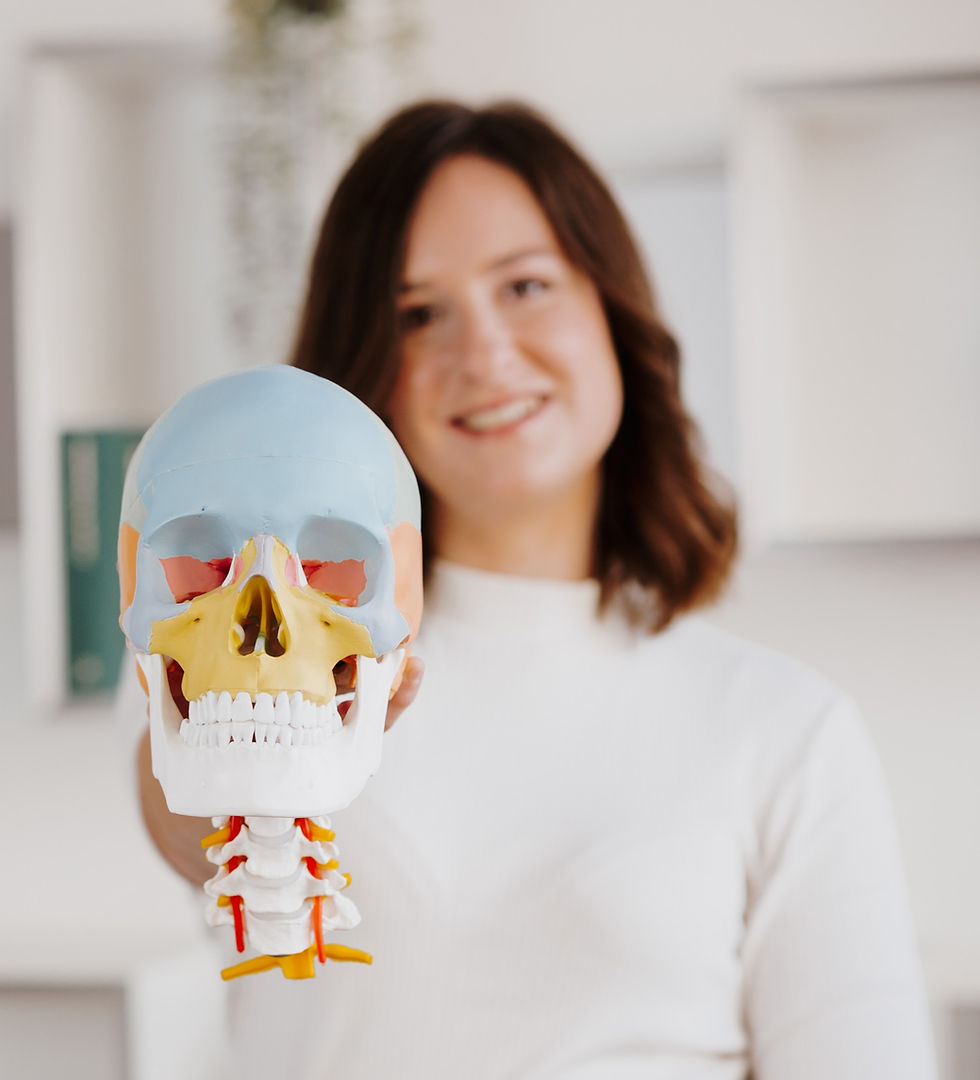What is CMD?
- Mariella Koch

- Oct 31, 2023
- 2 min read
“CMD stands for Cranio-Mandibular Dysfunction and describes a pathological condition of one or both jaw joints, taking all influencing factors and structures into account such as nerves, joints, muscles and skull bones.” (Mariella K. Koch)
The causes of dysregulation of the masticatory system are diverse. This includes, for example, stress, everyday struggles, burnout, depression, trauma and injuries to the face, head and neck area, night-time or all-day grinding and clenching of the teeth, sleep disorders, misaligned teeth and posture problems.
Common symptoms of temporomandibular joint problems (TMJ):
Pain in the head, jaw, face, teeth and neck region
Restriction of movement of the cervical spine and opening the mouth
Swallowing and speech problems, “lump feeling” in the throat
Clicking and grinding noises with jaw movement
Sleep and concentration disorders
Tinnitus
Dizziness
Migraine
Other possible complaints:
Pain in the shoulder, back and pelvis region
Hip, knee and foot problems
Digestive problems, irritable bowel syndrome, burning sensation of the tongue
Respiratory and heart problems
The connections are very complex and vary from person to person depending on your personal circumstances. Before the therapy, there is a detailed anamnesis and examination of all body systems. A treatment plan is then drawn up based on the findings.
Mariella, tell us why you find the topic of CMD so fascinating?
Even in my childhood, I was influenced by my father, who was a self-employed professional dental technician who was passionate about making dentures. They were visually indistinguishable from the patient's real teeth - which absolutely impressed me. After I had to have several dental operations and orthodontic procedures performed on me in my youth, some of which left me with problems for months, I decided to dedicate my therapeutic knowledge particularly in this area.
My passion is the delicate and complex manual therapeutic treatment of the face, jaw and cervical spine. But I also love the comprehensive consideration of the whole person, the individual organism with the numerous compensation strategies and connections between individual body systems. I therefore attended several further training courses on head and jaw treatments, completed training as an osteopath and passed the examination to become a Heilpraktiker. This gives me the ability to care for my patients individually and holistically.
What is different about your therapy?
My therapy is based on scientific results, osteopathic thinking and takes personal goals and life circumstances into account. The patient learns individual, simple exercises to treat and prevent the symptoms so that no dependence on therapy arises. The motto is: Help people help themselves.
Thanks for reading! :)
Your Mariella





Comments